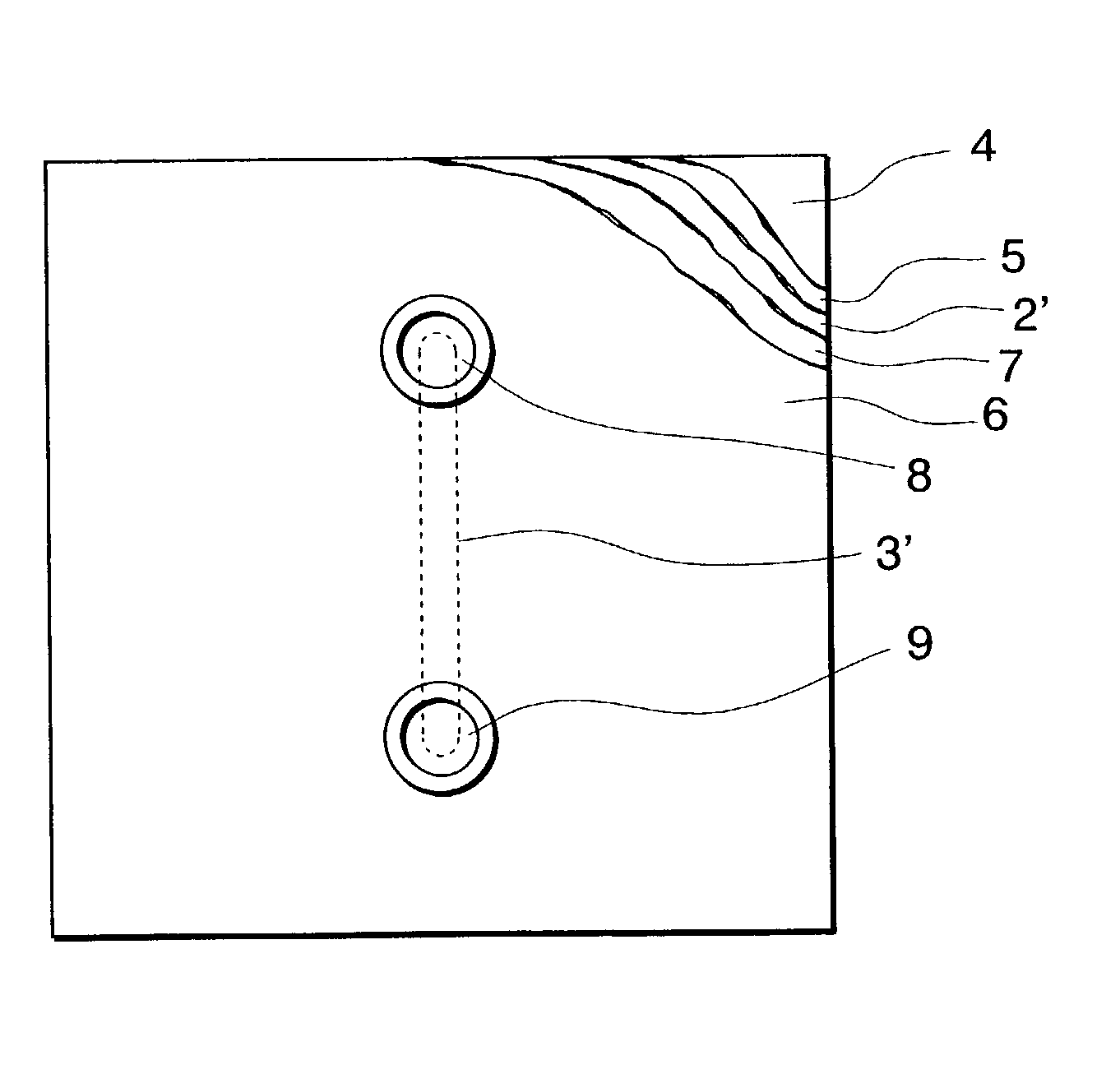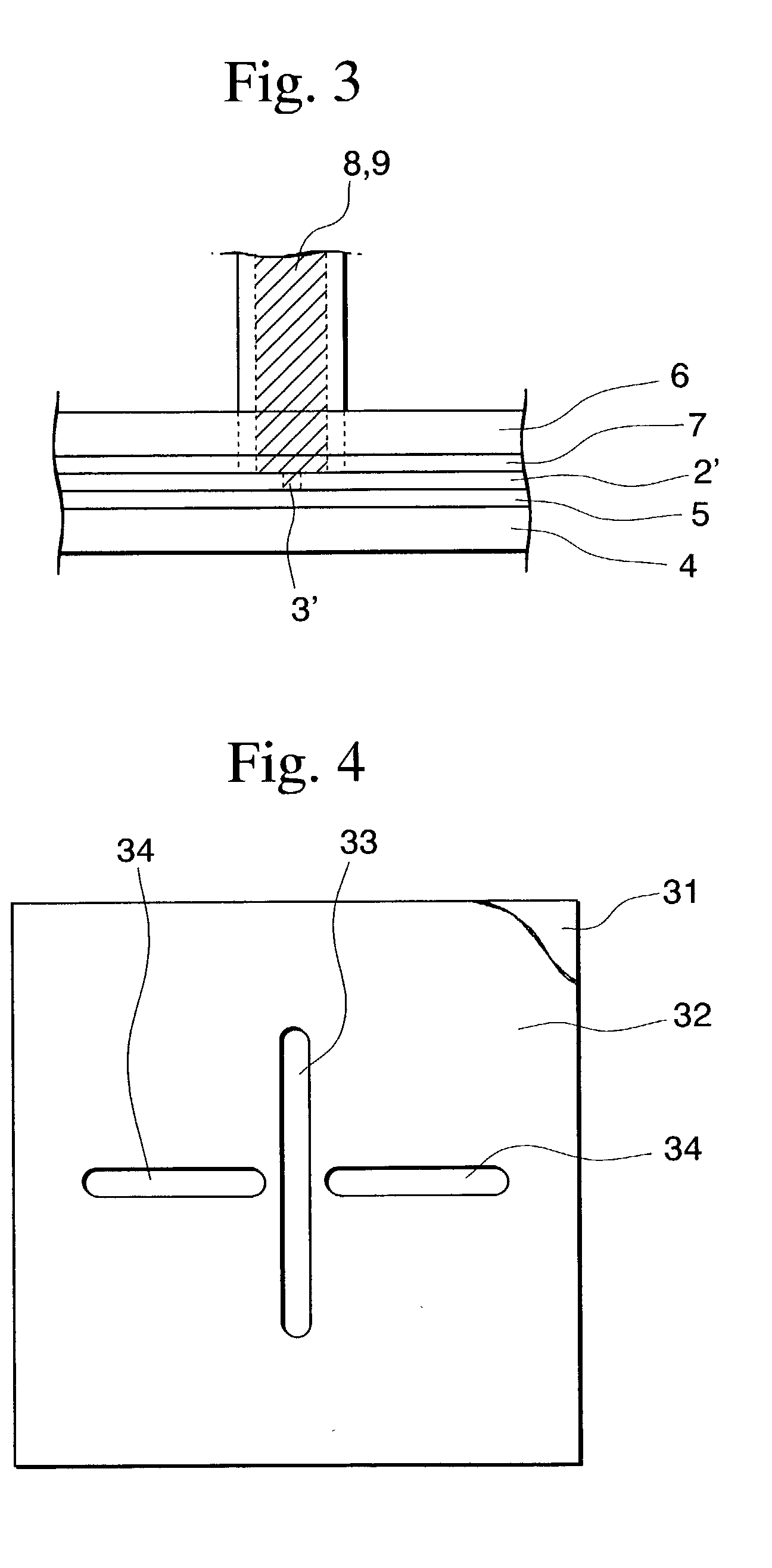Microdevice having multilayer structure and method for fabricating the same
a multi-layer structure and micro-device technology, applied in the direction of 3d object support structures, fluid speed measurement, slide valves, etc., can solve the problems of poor productivity, long time, difficult to form, etc., and achieve the effect of easy formation of fine stoppers, thin flexible diaphragms, and excellent reproducibility
- Summary
- Abstract
- Description
- Claims
- Application Information
AI Technical Summary
Benefits of technology
Problems solved by technology
Method used
Image
Examples
example 1
[0203] In this Example, a method of producing a microdevice of the present invention using an acrylic resin as the composition (x) by a method of peeling a coating substrate will be described.
[0204] Step (i)
[0205] As a coating substrate (1), a 30 .mu.m thick biaxially stretched polypropylene film (OPP film, manufactured by Futamura Chemical Industries Co., Ltd.), one surface of which is subjected to a corona discharge treatment was used after cutting into a size of 5 cm.times.5 cm. On the surface subjected to the corona treatment, the composition (x-1) was applied using a 127 .mu.m thick bar coater to form a coating film (2).
[0206] Step (ii)
[0207] In a nitrogen atmosphere, a portion other than a non-exposure portion (3) shown in FIG. 1 was irradiated with ultraviolet light via a photomask having a width of a non-exposure portion of 100 .mu.m and a length of a non-exposure portion of 30 mm for one second, thereby semi-curing the portion.
[0208] Step (iii)
[0209] While exposing the semi...
example 2
[0228] In this Example, the method of the present invention using a member (J) having a recessed cut portion on the surface will be described.
[0229] Manufacture of Member (J)
[0230] A member (J-2) was manufactured by interposing a plate having dimensions of 5 cm.times.5 cm.times.3 mm (thickness) made of polystyrene ("DICSTYRENE XC-520", manufactured by Dainippon Ink and Chemicals, Inc.) and a mold made of a silicon wafer between glass plates, fastening them with a spring clamp, heating in a hot-air oven at 120.degree. C. for about 2 hours, cooling to room temperature, removing the mold and the glass plates to form a groove-shaped recessed portion having the same shape and length as those in Example 1, except that a groove has a width of 50 .mu.m and a depth of 25 .mu.m, on the surface of a polystyrene plate.
[0231] Formation of Semi-Cured Coating Film
[0232] In the same manner as in Example 1, except that a pattern of exposure has a configuration such that each orifice having a diamete...
example 3
[0235] In this Example, a method of producing a microdevice of the present invention using a maleimide resin as the composition (x) by a method of peeling a coating substrate will be described. In the same manner as in Example 1, except that a composition (x-2) was used as the composition (x) in place of the composition (x-1) and a composition (x-2') was used in place of the composition (x-1') and, furthermore, the exposure time was 2 seconds, a microdevice (D-3) having the same structure as that in Example 1 was manufactured.
PUM
| Property | Measurement | Unit |
|---|---|---|
| thickness | aaaaa | aaaaa |
| width | aaaaa | aaaaa |
| contact angle | aaaaa | aaaaa |
Abstract
Description
Claims
Application Information
 Login to View More
Login to View More - R&D
- Intellectual Property
- Life Sciences
- Materials
- Tech Scout
- Unparalleled Data Quality
- Higher Quality Content
- 60% Fewer Hallucinations
Browse by: Latest US Patents, China's latest patents, Technical Efficacy Thesaurus, Application Domain, Technology Topic, Popular Technical Reports.
© 2025 PatSnap. All rights reserved.Legal|Privacy policy|Modern Slavery Act Transparency Statement|Sitemap|About US| Contact US: help@patsnap.com



